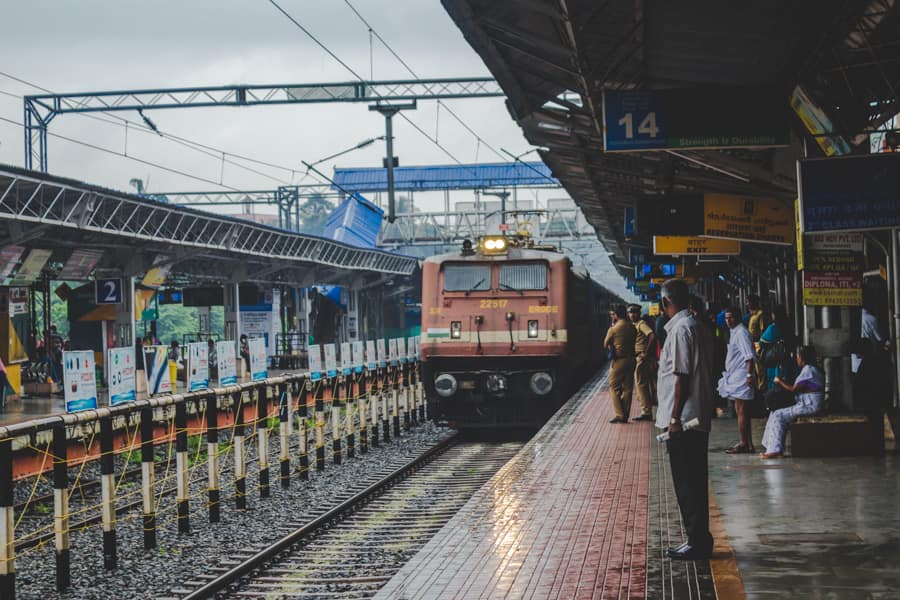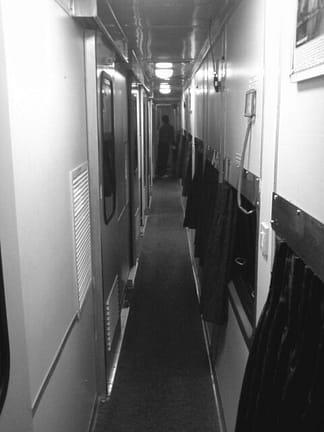Travelling in India is an adventure like none other. Of course Indian trains are no different. Knowing a little bit about how the Indian trains are structured may help you enjoy your adventure a bit more.
Indian Railways – Train Grades
It’s in the name!
Yes, while making your reservation, take a look at the train name. Does it include terms like Express (Exp) or Passenger (Pass)? The rule of thumb is – always go for the Express trains (unless you don’t mind stopping at every single station along the way). They cost meagrely extra, but can save you a lot of time. Express graded trains have fewer stops and maintain an average speed throughout their route. Passenger trains on the other hand can save you a quarter or two, but will add-on hours to your travel time at best, and days at worst.
Apart from that, it is good to know that important train routes often have Rajdhani Express and Shatabdi Express trains (with a multitude of name variations) running on them. Rajdhani (sleeper) and Shatabdi (seater) graded trains are fully air-conditioned, considered VIP of trains, and therefore enjoy precedence over other trains.
Useful websites for Indian trains:
- You will most certainly need an account with the IRCTC to make online bookings, even though through third-party travel websites. So this would be a good place to start: Indian Railway Catering and Tourism Corporation Limited (IRCTC)
- General Information (Availability, Fare, etc.) and PNR Status: Indian Railways Passenger Reservation Enquiry
- Train Running Status: Indian Railways Live Train Running Status

Indian Railways – Travel Classes
First Class Air-conditioned (1A) – Sleeper
This is the most expensive and leisurely class of all. The widest berths that the Indian Railways has to offer are laid out either in a cabin of 4 with two upper and two lower berths, or a coupé with one upper and one lower berth. Couples usually are allotted the coupé. This class offers no side berths. The cabin doors can be latched offering a degree of privacy. The ticket price includes meals and refreshments. A steward is ready to attend to your needs whom you can summon with a call-bell at your seat! However, note that travelling in this class can easily turn awkward if you – as solo or couple travellers – are stuck with total strangers sharing a cabin with you. Bedding is provided.
AC 2-tier (2A) – Sleeper
This is the second most expensive class offered by the Indian Railways. Berths are narrower than the first class, but wider than 3-tier (explained below), and are laid out similar to the First Class minus the cabin with door. AC 2-tier offers side berths as well. All beds in this class offer curtains for privacy. Bedding is provided.
AC 3-tier (3A) – Sleeper
This one is the cheapest of all air-conditioned classes offered by the Indian Railways. Berths are narrow, with a middle berth inserted between the upper and lower berths, hence offering practically no headroom for sitting at nighttime (once the middle berth – which essentially is the backrest of the lower berth – is set into its reclining position). Nevertheless, given the long and enduring journeys that some trips can be, most people make mutual understandings and tend to sleep through the day as well. AC 3-tier offers side berths as well, including the side middle berth. Bedding is provided.
Bedding, although provided, is often reissued to following passengers, and can be awfully dirty. Carrying your own bedding or a sleeping bag would be a fantastic idea.
AC Chair Car (CC) – Sitting
As the name suggests, this class has seats instead of berths, and is recommended only for short-distance travels.
First Class (FC) – Sleeper
First Class is similar to the First Class AC, but without the AC. Meals are not included and bedding is not provided. They are significantly cheaper than their AC equivalents. Currently only 18 Indian trains offer this class. However, due to lack of demand, this class will eventually be discontinued.
Sleeper Class (SL)
Sleeper class is similar to AC 3-tier (again, without the AC), and is the most popular class on Indian trains. No extra facilities are included.
Second Sitting (2S)
Wooden benches to sit on. This is another unpopular class nearing extinction due to lack of demand.
General
Also known as the Unreserved Class, this is the cheapest of all classes – offers wooden berths & seats, and is usually overcrowded to the extent that there is barely room to set foot anywhere. Because this class offers no reservation, there is no guarantee of space of any kind. People sleep literally everywhere – on berths, seats, floor, and even overhead luggage compartments!




One thought on “Indian Train Classes Explained, Simply”